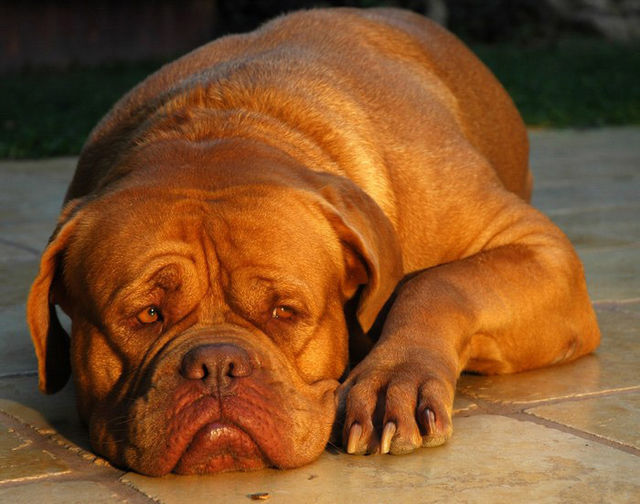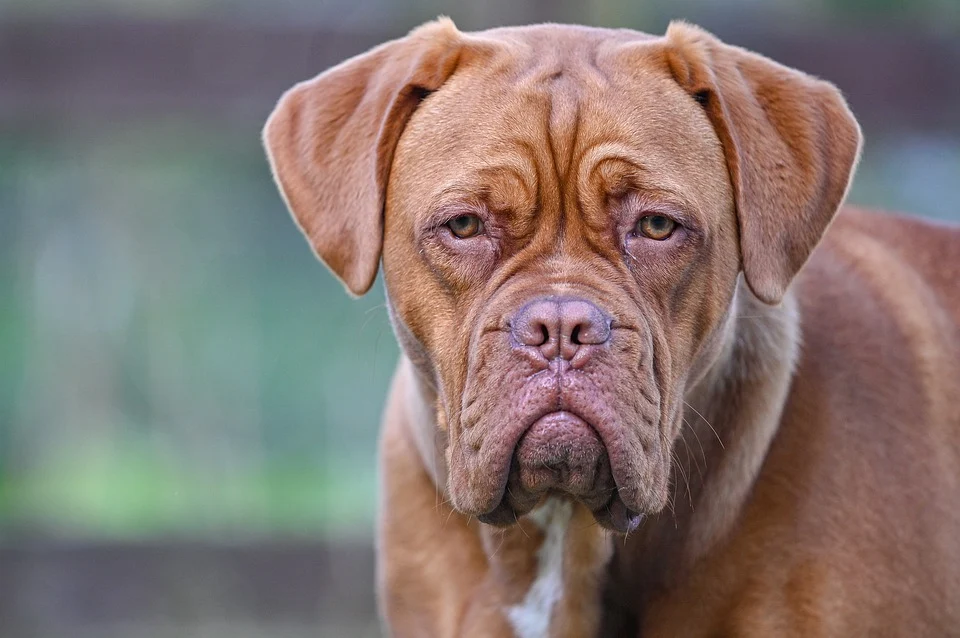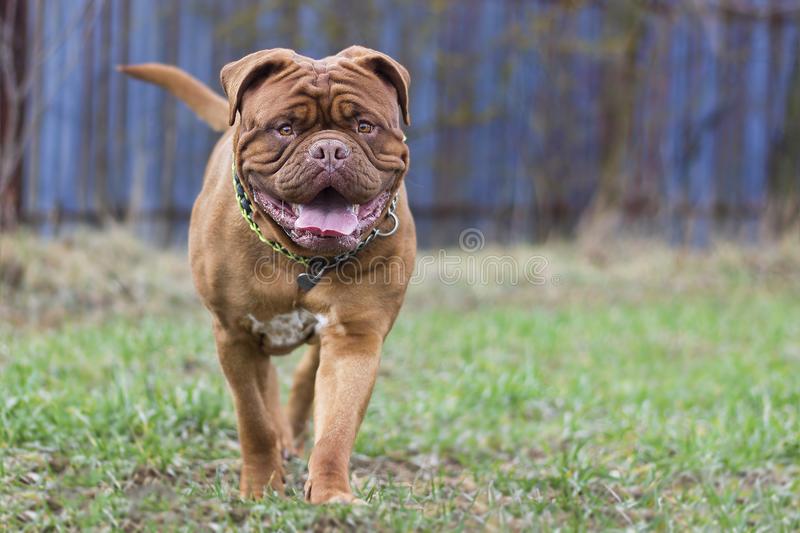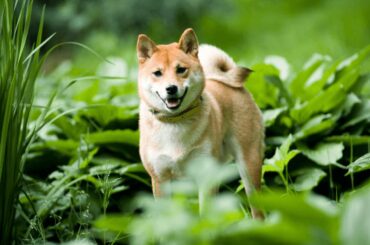The Dogue de Bordeaux has been known in France since the 14th century, especially in the Bordeaux region of southern France. As a result, the city gave this enormous dog its name. A huge French mastiff breed known as the Dogue de Bordeaux, Bordeaux Mastiff, French Mastiff, or Bordeauxdog.
The Bordeaux, a classic brachycephalic mastiff breed, is a robust dog with a muscular build. This powerful breed has been used to pull carts and move goods. The French placed a premium on maintaining the purity of the original breeding line. Black masks were said to indicate the arrival of the English Mastiff.
The Bullmastiff and the Bulldog are thought to have existed before the Bulldog. According to some, the Dogue can be traced to the Bullmastiff’s background, and some suggest that the Dogue and mastiff breeds were developed at the same time. Another hypothesis is that the Dogue de Bordeaux is descended from the Tibetan Mastiff and that the Dogue is linked to the Greek war dog Molossus.
There was a breed in Rome at the time of Julius Caesar’s rule that was comparable to the Dogue de Bordeaux, likely a cousin of the Neapolitan Mastiff. Others believe the Dogue de Bordeaux is a descendant of the Dogues de Bordeaux of Aquitaine, a breed that existed in ancient France.

For years, the “Bordeaux Mastiff” or “Bordeaux Bulldog,” as it was often known, was thought to come in two sizes. After the 1700s, the smaller Doguin variant vanishes from historical records, leaving the somewhat bigger Dogue de Bordeaux as the breed we know today.
Dogues have long outlived their usefulness as fighting dogs, and have been used as hunters, drafters, and security dogs at various periods throughout their history. They were deployed as guard dogs on the nobility’s huge estates during the late 1700s. With the French Revolution, the Dogue’s aristocratic employers were dragged off to captivity and death, and their employment came to an abrupt end.
The breed was originally shown in 1863 in France, and since then it has grown in popularity not just in France but throughout the world. The Kennel Club Gazette published the first record of the Dogue de Bordeaux in the United Kingdom in 1897. The Kennel Club (UK) first recognized the breed in 1997, however, it took until 2001 for the Kennel Club (UK) to establish an interim breed standard. The Bordeaux dog did not have a unified breed type until around 1920.
Table of Contents
Physical Characteristics of Dogue de Bordeaux
- The Dogue de Bordeaux Dog is a robust dog with a well-balanced, muscular, and enormous frame.
- The distance between the chest’s deepest point and the ground is slightly less than the chest’s depth.
- The breed’s big head with suitable proportions and characteristics is a distinguishing feature.

- The Dogue de Bordeaux has a thick-set body with a modest dip in the upper line and a softly rounded croup.
- Straight and heavy-boned front legs, The straight tail is set and carried low, beginning thickly at the base and tapering to a point at the end. It should not extend lower than the hocks.
Males weigh a minimum of 110 pounds and stand 23.5 to 27 inches tall at the shoulder. Females have a shoulder height of 23 to 26 inches and weigh a minimum of 99 pounds. The coat must be short, fine, and pleasant to the touch,’ according to the regulation. Fawn (light, coppery red) to mahogany (dark, brownish red) in color, with a black, brown, or red mask, albeit the red mask is true to the breed. On the tips of the toes and on the breast, white marks are permissible.
Behavior
The Dogue de Bordeaux is known for being well-tempered. Multiple breed standards characterize them as a “gentle giant” because of their stocky, low barring, and robust demeanor, but they have a caring and pleasant personality. This breed is noted for being laid-back and prefers to spend time lounging around the house and with the family. They are often very loyal to their owners and, despite their reputation as a calmer breed, make excellent security dogs. This breed is also fiercely loyal to its family. Dogue de Bordeaux’s were bred as military dogs and afterward employed for hunting and security.
Training
Dogue de Bordeaux, like other mastiff breeds, has a commanding presence and is highly headstrong. This, combined with their innate power, necessitates rigorous training beginning at a young age. This involves proper socialization to prevent them from being aggressive toward other dogs or strangers. It is strongly advised that you should not allow this dog to become the family’s pack leader.
Early socialization and obedience instruction are essential. A rough trainer or a heavy-handed approach should be avoided with the Dogue de Bordeaux since it is a sensitive breed that craves trust. Ownership of the breed is not for the timid or the highly busy. Discipline should be tough and persistent without being cruel. He has a reputation for being nice and docile, but he can also be headstrong and arrogant.
He is a loving and affectionate family dog. To prevent hostility toward other animals and unnecessary aggression toward strangers, patient, consistent training is essential, as is early and broad socialization.
Caring
They like to play, go for walks, and relax on the couch. Young Bordeaux should be limited to low-impact exercise until they reach a certain age to avoid stressing their developing bones and joints.

The breed’s short coat sheds all year, but using a rubber curry helps reduce the amount of loose hair that falls to the floor. The breed is noted for drooling profusely, and the wrinkles on their faces require extra attention at least weekly, if not daily, to keep them clean and dry. Cleaning the ears and checking for debris or symptoms of infection should be done at least once a week.
Health
In the Dogue de Bordeaux, bloat, also known as gastric dilatation and volvulus (GDV), is a severe problem. The Dogue can suffer from breathing problems due to its brachycephalic skull. As a result, some people may become heat or activity intolerant. Dilated cardiomyopathy is another heart problem in the breed. Cancer, orthopedic disorders (such as hips and elbows), and epilepsy are all concerns in the type. They have a 14-year lifespan.
RECOMMENDED ARTICLES
- Diabetes In Dogs- Causes, Risk Factors And Treatment
- Canine Influenza (Dog Flu)- Causes, Symptoms And Treatment
- Cancer in Canine and Diagnosis




